So you want to know how to make a commercial for your brand. Maybe you know what idea you want but are unsure of how to best concept and shoot it.
Knowing how to make a commercial starts with what you’re trying to say. If you can be clear on that, and the principles of persuasive advertising, you’ll get a concept hatched and shot in no time.
In today’s post we’ll dive into what makes good persuasive ads, and how you can make one yourself. Before you know it, you’ll be yelling “wrap!” on a commercial that does justice to your brand.
Ethos, pathos, Logos
Overview of persuasive ad techniques
The techniques used in persuasive commercials are nothing new. Aristotle, some 2,000 years ago, broke speaker-to-audience communications into three components -- ethos (credibility), logos (logic), and pathos (emotions).
Ethos, Pathos and Logos: How to Create Persuasive Ads
These make up what is now known as the rhetorical triangle.
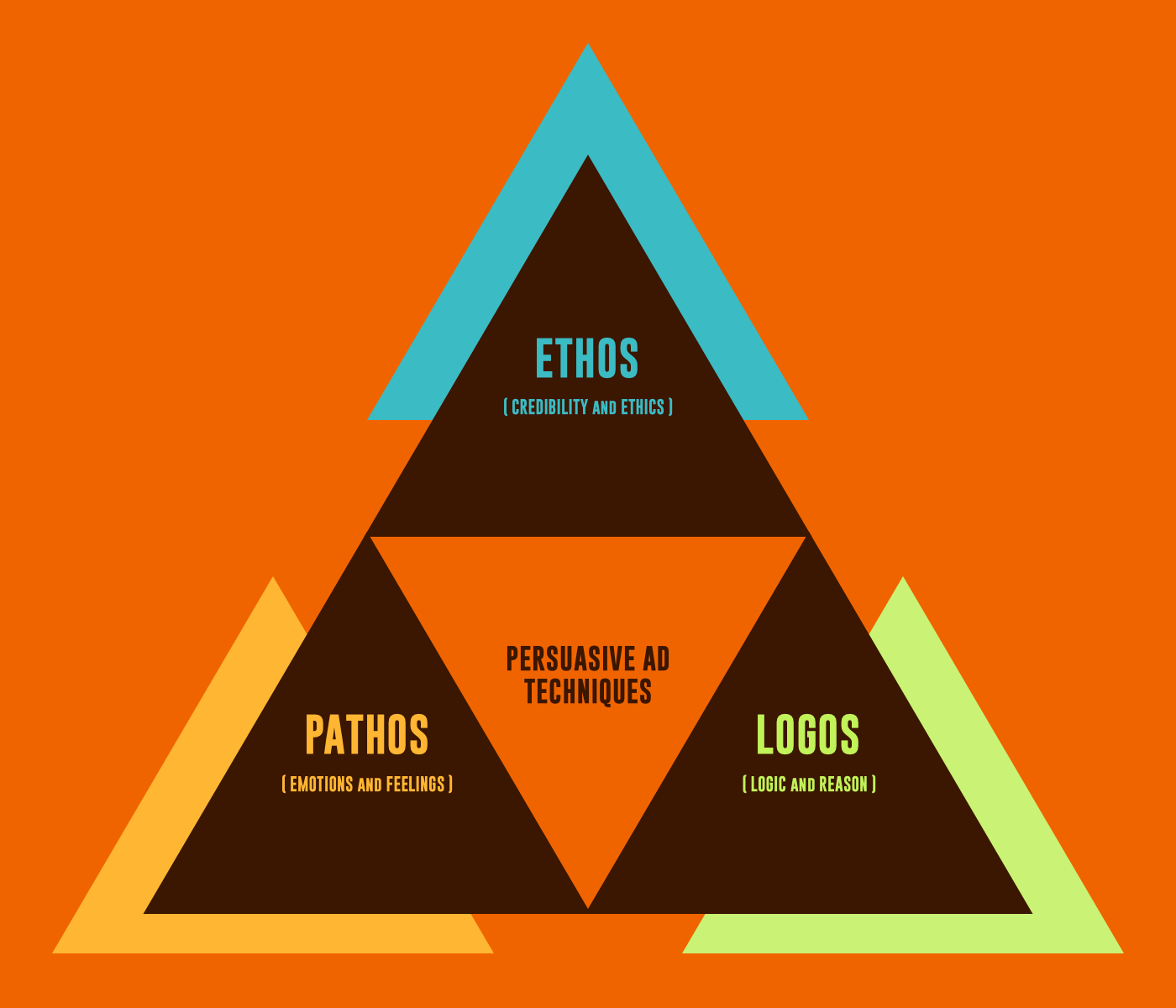
The Rhetorical Triangle
At the heart of every good argument is some combination of these components (ideally all three). To specify:
Pathos is an appeal to the audience’s feelings.
Ethos is an appeal to the speaker’s credibility.
Logos is as an appeal to the audience’s logic, using facts and evidence.
A recent Volvo commercial used all of them, and was among the most effective ads of recent memory.Volvo shows how to make a good tv advertisement with persuasive techniques
In this commercial, a mother comforts her daughter on her first day of school. As the daughter walks to school, she crosses in front of an oncoming Volvo.
The car stops just in time, thanks to Volvo’s automated safety features.
As we hear the girl describe her life ambitions, the commercial flashes forward to poignant moments of her future life. Thus, the audience invests emotionally (pathos), and are relieved when her life is saved.
Consider how perfectly ordinary the mother and daughter feel. Their familiarity invites us to see them as everyday, credible people. This is ethos at work -- through their credibility, the audience feels that Volvo is too.
Finally, we see that Volvo prevents a potential catastrophes. Their built-in safety features offer an undeniably safe driving experience. This is logos at work: Volvo seems a logical choice.
STEP 1 – Match your brand
How to make a commercial match your brand

In order to make your own commercial, start with what you’re trying to say about your brand.
The overriding message of the Volvo ad is simple: protect your life. We see that Volvo designs cars that do this, with state-of-the art technology.
Think about your own message. What is your brand trying to accomplish, and how? Use logos, pathos and ethos to help you hone in on your message.
For example, perhaps you represent a food brand.
If your brand offers healthier options, with better ingredients, then it offers a logical choice. Build off that.

Persuasive ads can invoke logic (logos) to appeal a brand to their customer
If you make a fun snack for kids that’s not necessarily healthy. Then maybe your brand is built around family familiarity.
Dunkin Donuts shows how to make a commercial to maximize familiarity and credibility.
Or maybe your brand is seen as fun and humorous (pathos). Then you might want to maximize on the comedic potential.
Comedy makes for persuasive commercials, if the brand allows
Or maybe your brand is seen as fun and humorous (pathos). Then you might want to maximize on the comedic potential.
Step 2 - Introduce a story
How to make a commetcial story-based
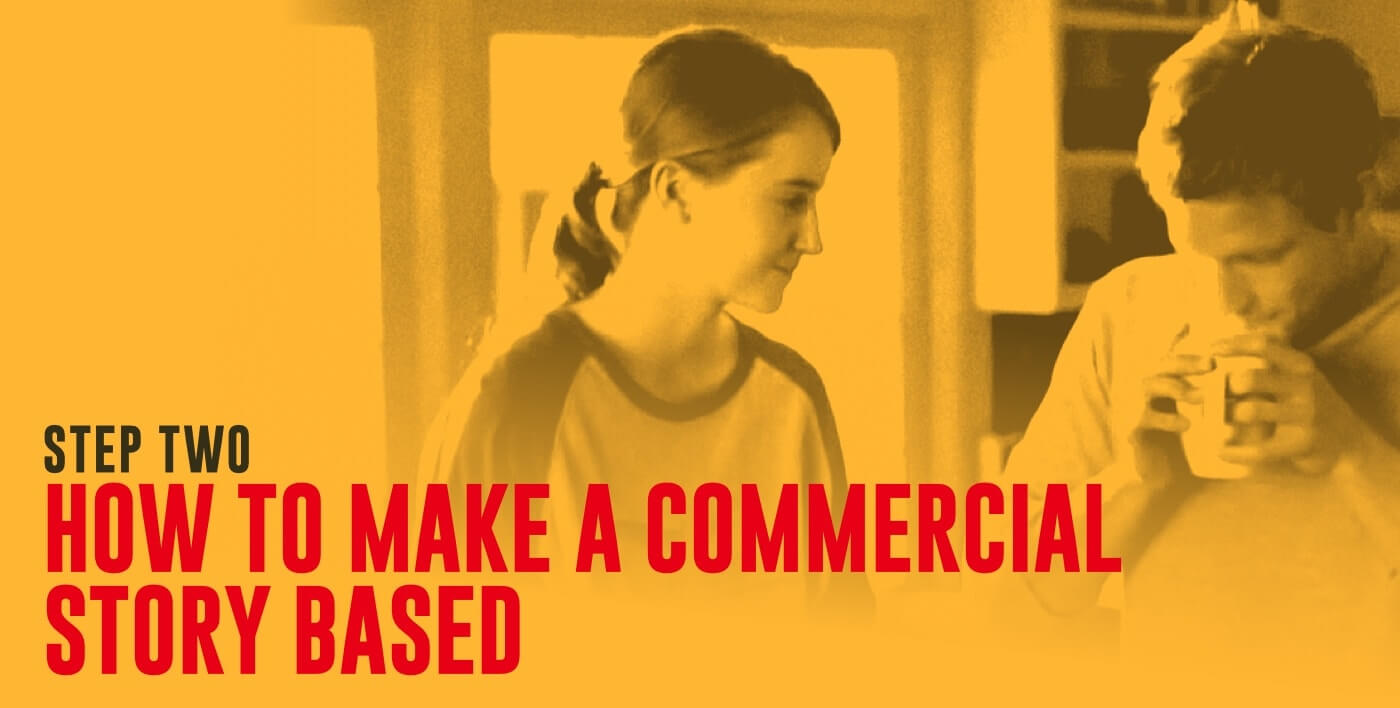
Once you’re crystal clear on the voice of your brand, and the persuasive techniques to bolster it, concept a story to suit it.
You might not think that successful tv ads need to tell stories. After all, can’t persuasive commercials just tell why someone should buy the product?
On the surface, that’s what this famous DollarShaveClub did…
DollarShave Club Promo
But the writing is cleverly conceived, and sequenced with comical events that occur as CEO Michael Dubin tours you through his warehouse.
Most commercials are very short. TV ads, for example, are typically 15 or 30 seconds. So you need to find a concept that is very clear and easy to communicate.
Watch as many videos related to your brand that you can find, and make a moodboard to capture the ones that inspire you.
Finally, jot down as many concepts and scenarios as you can find that might visualize your brand’s identity.
STEP 3 –create a script
Make your own commercial script
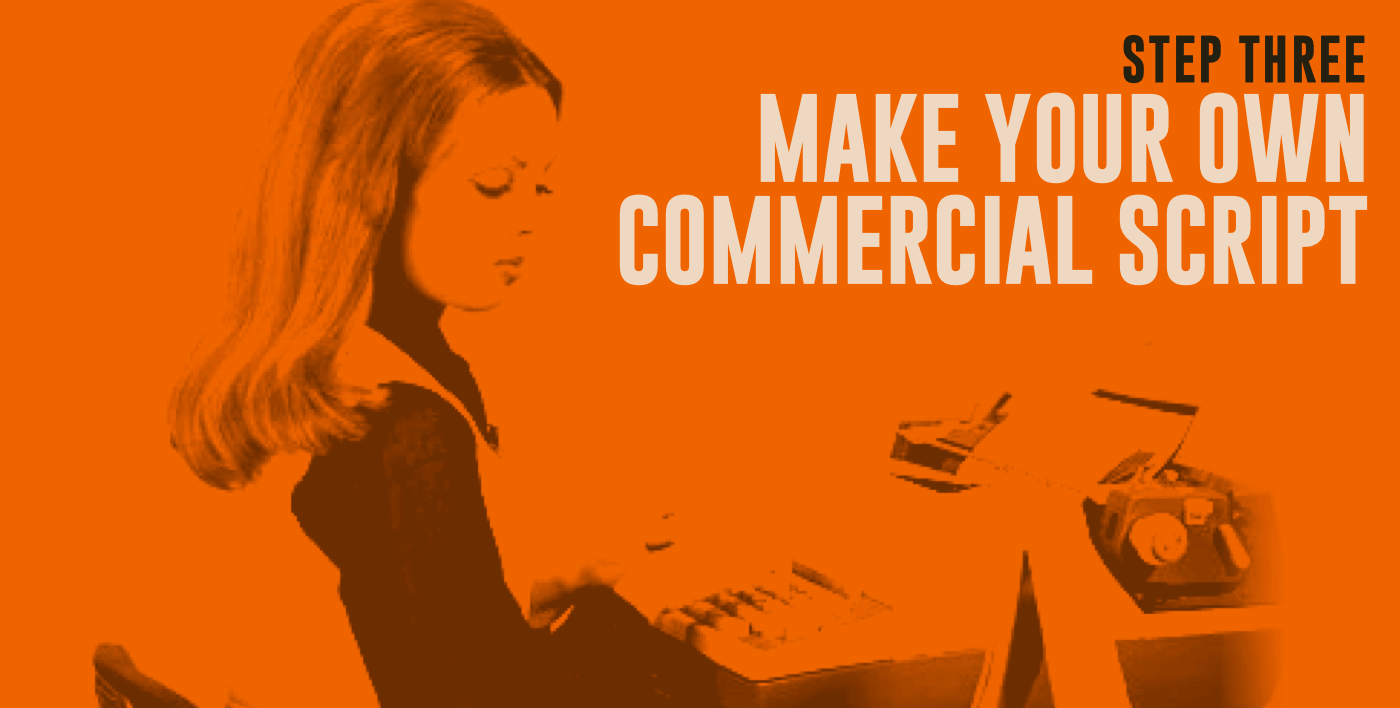
After you lock a solid concept, you have to make it work in script form.
Start by outlining the main things that have to happen. At least get down a beginning, middle and end to serve as your structure.
Flesh this “beat list” out until you’ve connected each of the events with specific actions.
Then open up a software like Final Draft or Celtx and write it all down in screenplay format.
If this is too formal approach for you, find a two-column TV commercial script template and jot down your beats in terms of the video and audio.
Remember, effective ads have to be concise. Odds are you’ll have to go through a few drafts until it is as short as it needs to be.
If you use a column template, add times to each event.
STEP 4 – prep your shoot
Prep for the shoot
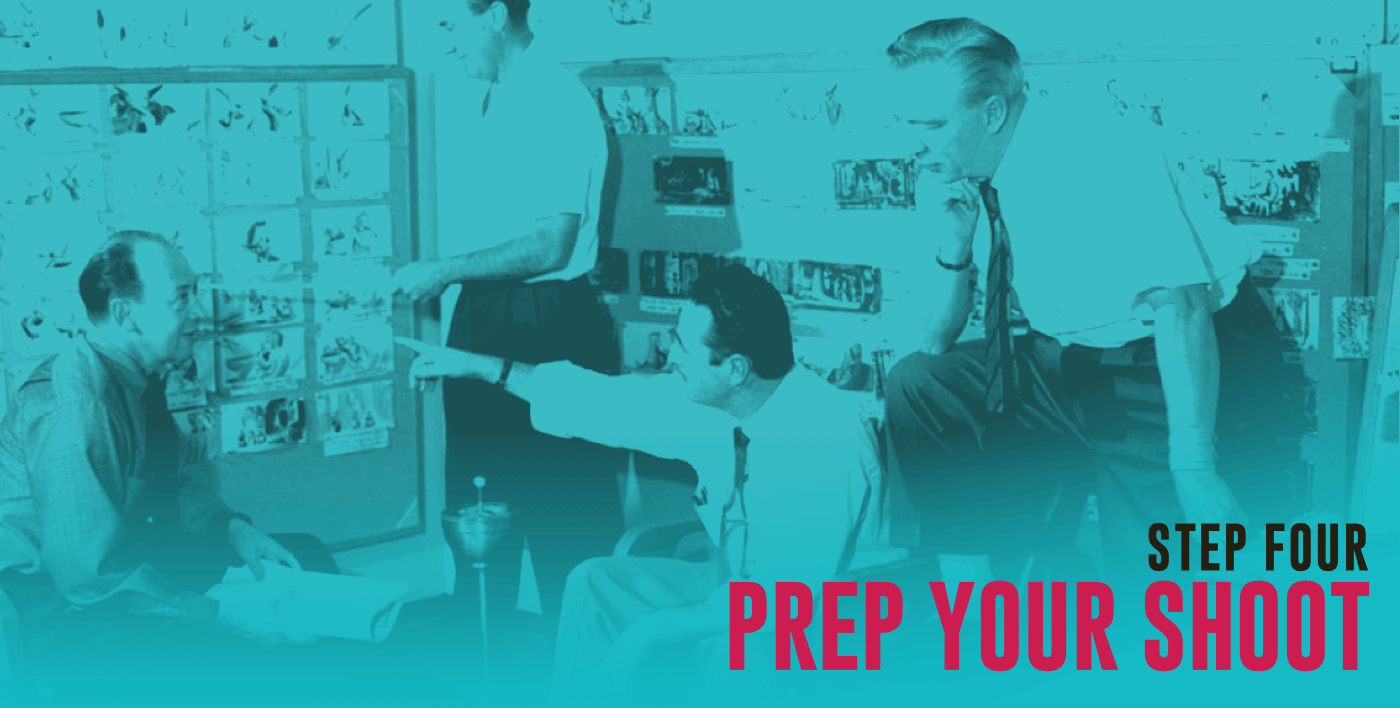
After you pare your script down to its cleanest form, you’re ready to move into pre-production.
Productions for commercials vary wildly. They can range from stock footage montages to multi-million dollar location shoots.
The typical TV commercial production process is not unlike movies and TV shows. After a script is locked, an agency will hire the director, cast and crew.
On a set budget, the director will then work with his cinematographer to storyboard the commercial, and prep the shoot.
Even if you’re producing on a smaller scale, you’ll need to prep it.
MAKE A STORYBOARD AND SHOT LIST
To start, translate your script into a storyboard. For this, you will need to draw -- or source related images for -- the specific actions that each shot will capture.
You will then sequence them to match the order of events in your script.
To maximize efficiency, consider a production management software like StudioBinder, which takes your script and structures it into scenes. These containers then organize your storyboarded shots.
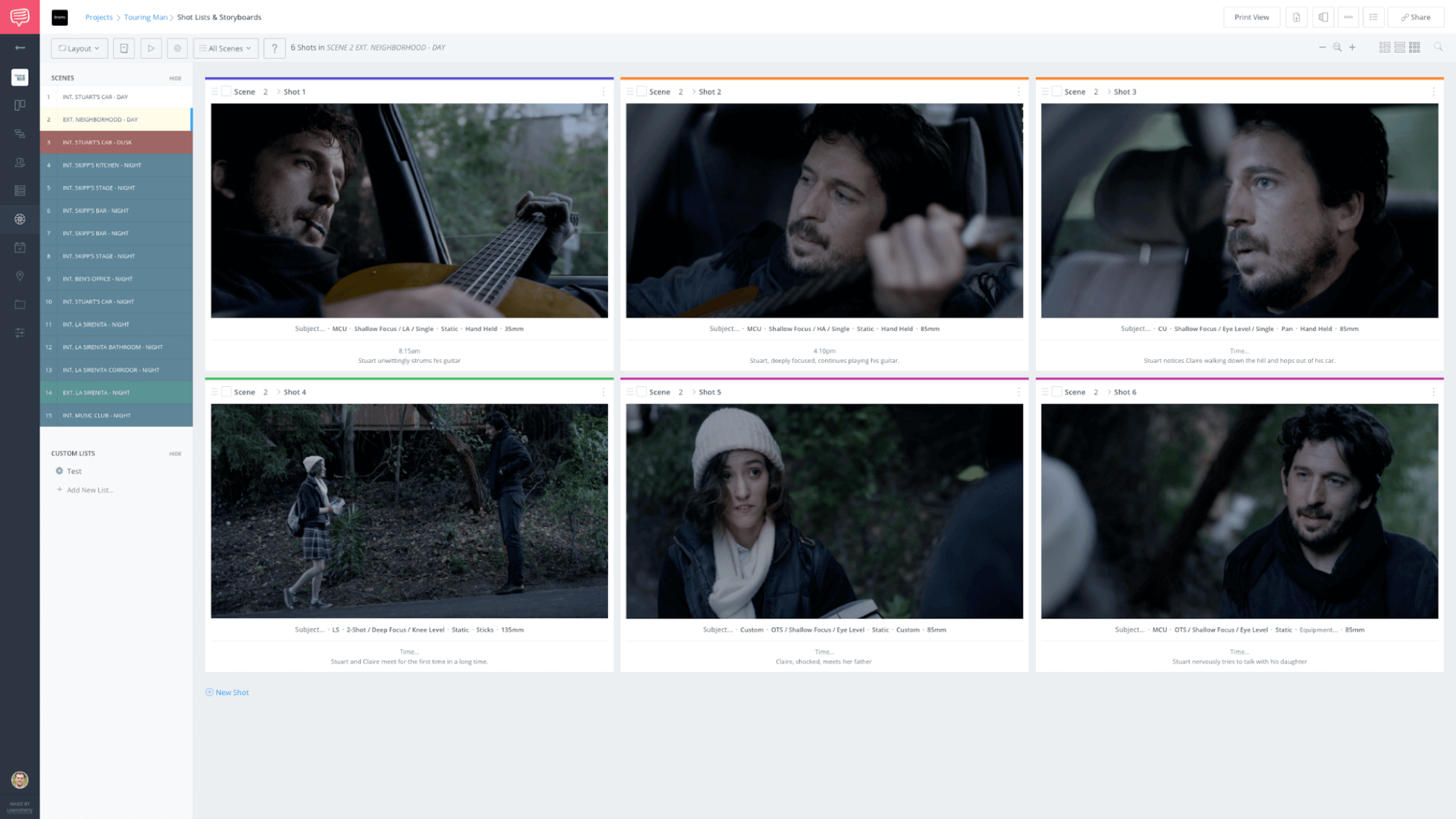
Adjust your layouts depending on many factors including aspect ratios, shot numbers, and columns
As you create (or source) your images, think about how to maximize your chosen persuasive advertising techniques. For example, if you are creating a PSA with an emotionally stirring testimonial, consider images that are close up and intimate.
Now it’s time to get specific with the images you storyboarded. This is what a shot list does: it breaks down the specific shots you need to capture.
When you set up your storyboard in StudioBinder, you set up your shot list simultaneously.
With the shot list, you will detail crucial shot information like the shot’s size, the shot type (focus, how many people are in the shot, etc), and camera movement.
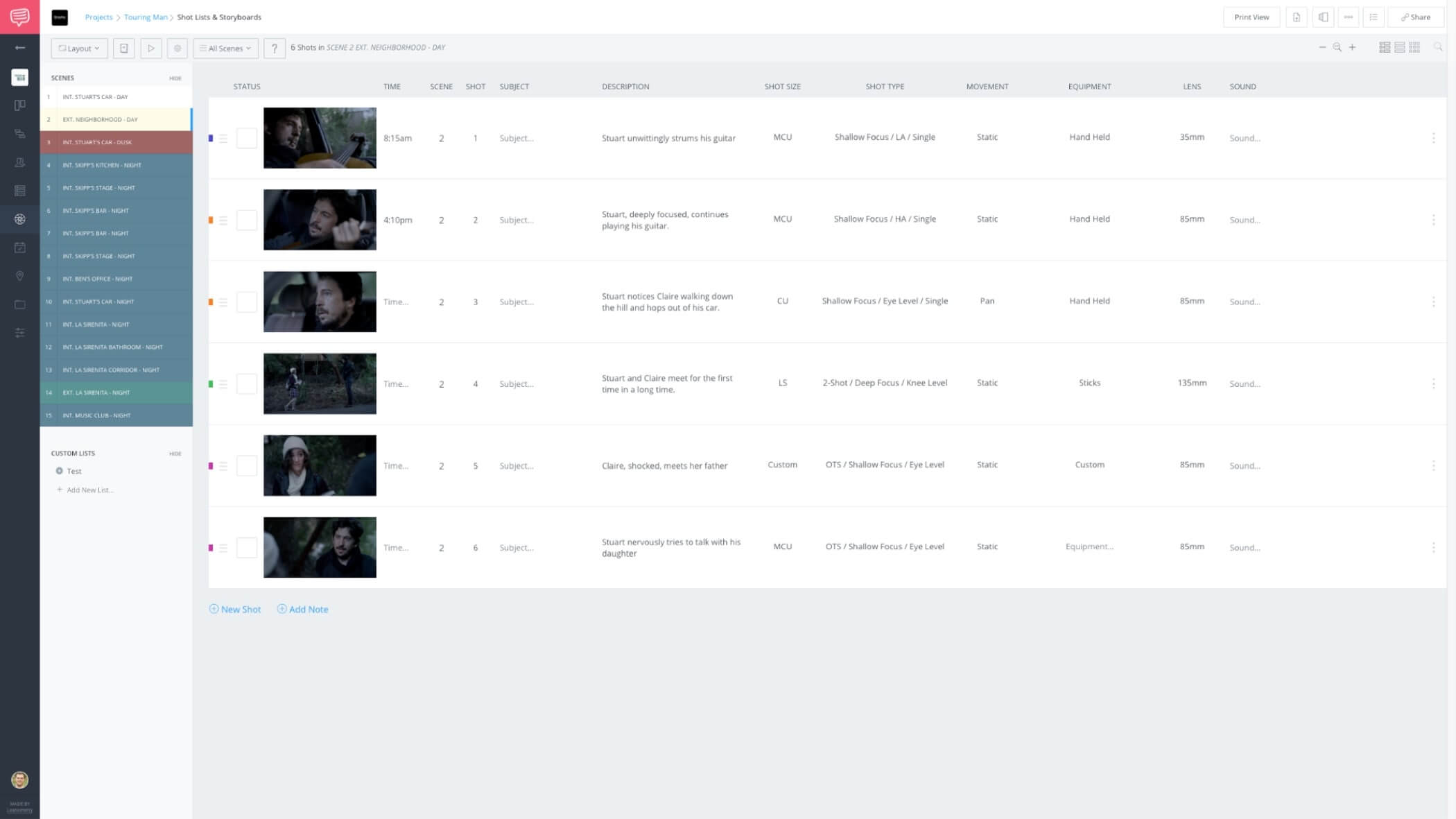
If you are working with an agency, you will need a shot list to clarify to them what you will be shot. And you will most likely need to ask them for approval on it.
Whether you’re working with an agency or not, you’ll also need a shot list use it to clarify your vision to your cast and crew.
FINALIZE YOUR PRE PRODUCTION
With everyone signed off on your pre production materials, you and your director will need to finalize the production. That means, with your budget in ind, you’ll hire cast and crew. You will also need to secure locations, equipment, props and wardrobe.
Finally, you’ll make a production schedule that satisfies the number of shots and scenes you need to film.
Then, before you know it, you’ll be sending out call sheets to notify your cast and crew of when and where the shoot will be.STEP 5 – MAKING A COMMERCIAL
Shoot your commercial

Making a commercial is never easy. But it will be much smoother if you were thorough with your concept, clear with your script, and creative with your storyboard and shot lists.
There will always be logistical hang-ups and unforeseen setbacks. But focus on making sure the director is getting the shots as close to the storyboard and shot list as possible.
Remember: simplicity is what makes a good commercial. The director must make sure every element (performances, camera moves, lighting) executes the idea and tone of the concept and script.
Since you’re not shooting as much as you would for a film or TV episode, really focus on getting each shot perfect.
As the day moves on, you’ll cross off shots in your shot list, as you go. Finally, you’ll secure any additional coverage you might need. Then you’re ready to yell “wrap!”Wrapping up
Up Next: Trends in Advertising
The most successful TV ads have a clear concept that is executed beautifully. As you approach your commercial, keep in mind that you have very little time to make an impact on your viewer.
The most important thing you can do is align the tenants of persuasive commercials with the voice of your brand. This should dictate every creative decision you make while concepting, writing, preparing and physically making a commercial.
Be simple, and tightly connect everything in your script to your core concept. Often, the most persuasive commercials are the simplest ones. Take a look at this classic advertisement by Pan Am.
Now that you know how to make a commercial, consider diving into some of the best trends in advertising today.
Now go forth and make your own commercial!
And, as always, be sure to let us know your thoughts in the comments below.
Project management for video creatives. Tasks, file sharing, calendars and more.
Manage video production timelines, tasks, storyboards, shot lists, breakdowns, call sheets. Made for video creatives, new media and film.
